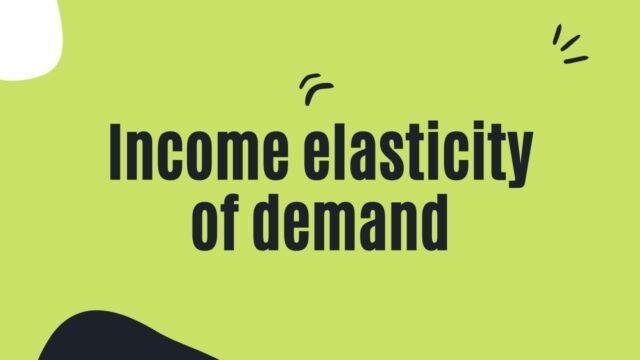
What is income elasticity of demand
Income elasticity of demand is a measure of how responsive consumers are to changes in income levels. The higher the income elasticity, the more sensitive consumers are to changes in income. For example, if someone’s income increases by 10%, and they spend 9% more on goods and services, then their income elasticity is 0.9. This means that they are fairly insensitive to changes in income levels. On the other hand, if someone’s income increases by 10%, and they spend 20% more on goods and services, then their income elasticity is 2.0. This means that they are very sensitive to changes in income levels. Income elasticity can be used to predict how changes in income will affect consumer spending patterns. It is also a useful tool for businesses, as it can help them to target their marketing efforts at specific groups of consumers.
How to calculate income elasticity of demand
To calculate it, you need to know two things: the percentage change in income and the percentage change in demand. The formula looks like this:
Income elasticity of demand = (% change in demand / % change in income) x 100
To use this formula, you first need to find data on both income and demand. You can find this data from a variety of sources, such as government statistics, surveys, and economic reports. Once you have the data, plug it into the formula and calculate the elasticity of demand.
There are a few things to keep in mind when interpreting the results. A positive number means that as income increases, demand also increases. This is known as an inferior good. A negative number means that as income increases, demand decreases. This is known as a normal good. And finally, a number near zero means that there is no relationship between income and demand. This is known as an inelastic good.
Factors that affect income elasticity of demand
There are a number of factors that can affect, including the nature of the good or service, the timing of the purchase, and the consumer’s preferences. Generally speaking, necessities have a lower income elasticity of demand than luxuries. This means that when income decreases, people are less likely to cut back on spending on necessities than on luxuries.
Additionally, goods with a long shelf life tend to have a higher demand than those with a shorter shelf life. This is because people are more likely to put off buying non-perishable goods when their incomes decrease.
Finally, consumer preferences play a role in income elasticity of demand. Some people place a high value on certain goods and services and are willing to spend more on them even when their incomes are tight. Others may be more price-sensitive and be more likely to reduce their spending when their incomes drop. Understanding the factors that influence demand can help businesses make better decisions about pricing and production levels.
Examples of goods and services with different income elasticities of demand
A good or service with a high income elasticity of demand will see an increase in demand when incomes rise, while a good or service with a low income elasticity of demand will see a decrease in demand when incomes rise. Examples of goods and services with different income elasticities of demand include:
* Luxury items such as jewelry and cars have a high income elasticity of demand. As incomes rise, people are more likely to buy these items.
* Necessities such as food and clothing have a low income elasticity of demand. Even when incomes rise, people are not much more likely to buy these items.
* Services such as healthcare and education have a mixed income elasticity of demand. When incomes rise, people are more likely to use these services, but there is a limit to how much they are willing to spend on them.
Implications of high or low income elasticity of demand
The income elasticity of demand (YED) is a measure of how much the quantity demanded of a good changes in response to a change in income. A good with a high YED will see an increase in demand when incomes rise, while a good with a low YED will see a decrease in demand.
The implications of this are significant for both consumers and businesses. For consumers, it is important to be aware of the YED of goods in order to make informed choices about spending. For businesses, the YED can be used as a tool for predicting how changes in income will impact demand for their products. A thorough understanding of the income elasticity of demand is essential for anyone hoping to make sound decisions about spending or production.
Government intervention and income elasticity of demand
When the government intervenes in the economy, it often does so in an attempt to influence the behavior of consumers. One way to do this is by changing the price of a good or service. For example, the government may impose a tax on cigarettes in order to discourage smoking. Alternatively, the government may offer subsidies for certain goods, such as renewable energy, in order to encourage their use.
Another way in which the government can influence consumer behavior is by changing the demand. It measures how much the demand for a good changes in response to a change in income. If the income, then a small increase in income will lead to a large increase in demand. The government can use fiscal policy to change the income demand and, as a result, influence the behavior of consumers.


































